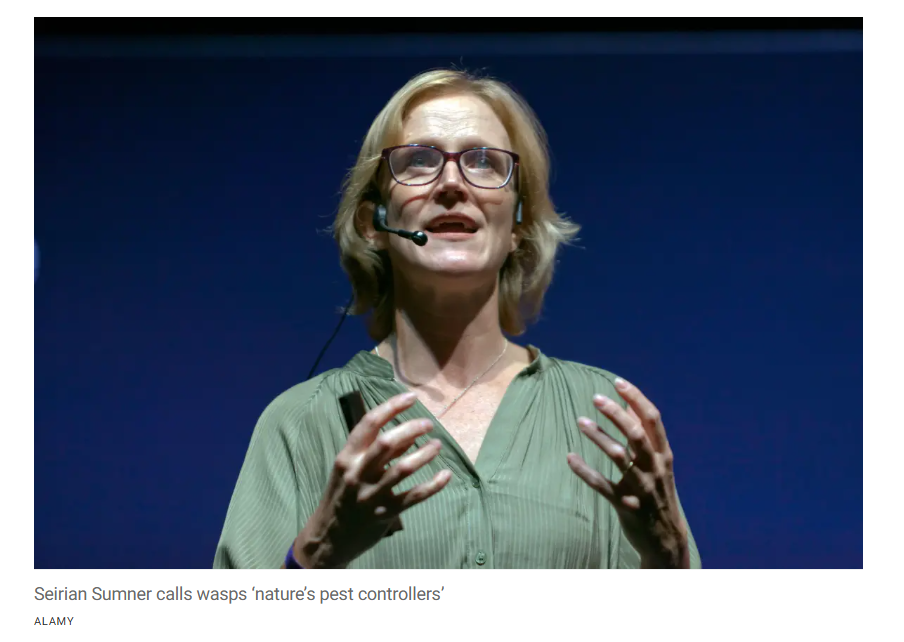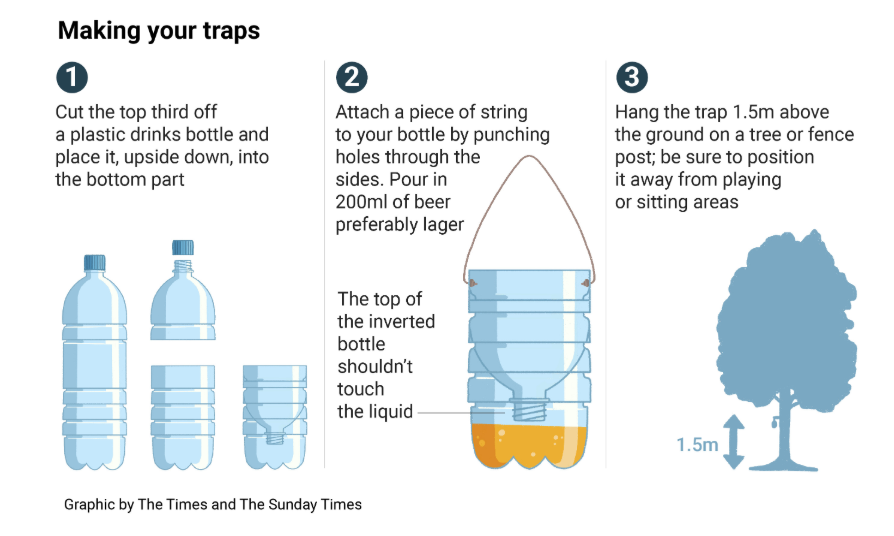Why scientists want you to snoop on the wasp in your garden
 Are they heading for your jam or your ham? It matters more than you might think
https://www.thetimes.com/article/0aa16915-7a75-4707-942d-7786b6ea1346
https://archive.ph/Y5wSr
Are they heading for your jam or your ham? It matters more than you might think
https://www.thetimes.com/article/0aa16915-7a75-4707-942d-7786b6ea1346
https://archive.ph/Y5wSr
 Wasps gather protein for their young and sugar for themselves. ALAMY
Wasps gather protein for their young and sugar for themselves. ALAMY
It may be the last thing on your mind as the wasp lands on your picnic. But before you swipe it away, scientists would like you to make a note of exactly what it is eating. “Does the wasp want ham or does it want jam? We want people to tell us,” said Seirian Sumner, professor of behavioural ecology at University College London.

The answer could provide insights into wasp breeding patterns and the speed at which their colonies grow in different parts of the country. Wasps, which are having a remarkably prosperous year due to the dry, warm spring, are vegetarian as adults. But as young larvae, growing in the nest, they need protein. To feed the babies, worker wasps will gather up any bit of protein they can find and take it back to the colony, whether it is from the ham or cheese at your picnic or a decaying carcass on the roadside.

Sumner said: “At this time of year, when colonies are going through the exponential growth phase, workers will go after protein, which they will take back to the nest to feed the larvae. “But later in the summer lots of the larvae will have pupated, so there should be less foraging of protein going on and more looking for sugar for themselves. We expect to see a shift from primarily ham or other protein to primarily jam or other sources of sugar such as lemonade.” By mid-to-late August, she said, the shift from ham to jam should have taken place, indicating that most larvae have pupated, but that may differ in different parts of the country.

She is asking picnickers to
record online the type of food that they see wasps go for, to allow scientists to work out exactly when this shift happens from place to place. Sumner is also asking for help tracking the species doing particularly well this year, and to identify the parts of the country in which they are thriving the most. She is encouraging householders to take part in the Big Wasp Survey, a monitoring project in its ninth year which assesses wasp prevalence. Starting this weekend, volunteers are asked to hang traps from a tree or fence post in their gardens made from plastic bottles and beer (orange juice is a suitable alternative).
snip






